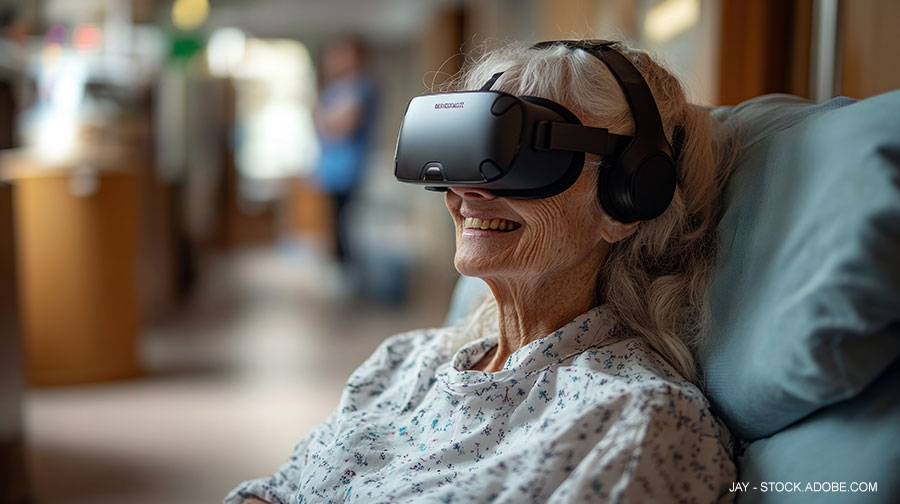 Digital health technologies, particularly with the advancement of artificial intelligence systems, are a growing area of interest in modern medicine. While research remains in relatively early stages, several tools are currently being investigated in the realm of perioperative medicine. In this session, Nidhi Rohatgi, MD, MS, SFHM, a clinical professor of medicine, neurosurgery, and anesthesiology, perioperative and pain medicine, and affiliate faculty in the Center for Artificial Intelligence and Medical Imaging at Stanford University in Stanford, Calif., reviewed the evidence around some emerging perioperative digital health technologies.
Digital health technologies, particularly with the advancement of artificial intelligence systems, are a growing area of interest in modern medicine. While research remains in relatively early stages, several tools are currently being investigated in the realm of perioperative medicine. In this session, Nidhi Rohatgi, MD, MS, SFHM, a clinical professor of medicine, neurosurgery, and anesthesiology, perioperative and pain medicine, and affiliate faculty in the Center for Artificial Intelligence and Medical Imaging at Stanford University in Stanford, Calif., reviewed the evidence around some emerging perioperative digital health technologies.
As more individuals own smartphones and opt to wear digital gear such as smartwatches and smart rings to “track their steps,” an emerging area of interest has been the use of digital wearables in perioperative risk assessments. A retrospective analysis published in 2024 showed that a baseline daily step count less than 7,500 may be associated with increased odds for postoperative complications. Another study indicated that step count may be a more accurate measurement than daily distance or stairs climbed. However, all studies cautioned on the limitations of the digital wearable devices themselves. Location of the device may significantly affect accurate measurements, and the accuracy of step measurement was noted to significantly decrease if patients were walking slower than 1-2 mph. A member of the audience was asked to demonstrate an ambulatory speed of 1-2 mph, which visually appeared to be faster than most members of the audience would ambulate on a general basis, let alone patients where perioperative functional risk would likely be an active concern.
Digital health platforms are also emerging as potential options for preoperative and postoperative virtual optimization. Patients with enough technological savvy could engage in guided functional exercise training, inspiratory muscle training, and other variations of psychological and nutritional support to both prepare and recover from surgical procedures. A randomized clinical trial in 2021 showed a lower risk of delirium in patients who engaged in cognitive prehabilitation through a digital health platform prior to undergoing surgery. Engagement with the digital platform appeared to be the key factor for success across studies, with one study noting that improved engagement was achieved through “gamification,” or the incorporation of game-play mechanics, into the interactive platform. While these programs can have efficacy, particularly if game mechanics are incorporated, the individualization of these platforms and managing custom content poses a large work burden that may not be currently feasible for many surgical teams to incorporate into regular practice.
Finally, the session touched on the perioperative use of virtual and augmented reality systems. Virtual reality (VR) is the immersion of an individual in a completely digital environment, whereas augmented reality (AR) is the overlay of digital elements on the real physical world. Both experiences have been studied in relation to managing postoperative pain and anxiety, as well as sedation requirements and patient education regarding their operative journey and expectations. One study used AR in orthopedic surgery patients by visually “walking” them through their trip to the operating room with ongoing narration from their surgeon, a process that took approximately three minutes but was shown to have a significant reduction in preoperative anxiety. Another study on VR-assisted patient rehabilitation in the cardiovascular setting reported faster recovery times and earlier hospital discharges. Improvement in pain management has been demonstrated in some minor procedural groups. While this data is promising, the use of this technology in the real world has many barriers, including cost, training, equipment management, and the time associated with customizing content.
Overall, the use of digital health systems is emerging as an ongoing area of promising research in the realm of perioperative medicine. However, many barriers remain for real-world implementation, and further studies on the degree of impact provided are still necessary going forward.
 Dr. O’Neill is an academic hospitalist, assistant professor of internal medicine, and physician lead of the medical aid in dying program at the University of New Mexico Health in Albuquerque, N.M.
Dr. O’Neill is an academic hospitalist, assistant professor of internal medicine, and physician lead of the medical aid in dying program at the University of New Mexico Health in Albuquerque, N.M.